Global Actuators Market - Comprehensive Data-Driven Market Analysis & Strategic Outlook
The global actuators market has come a long way from being mere mechanical elements to being one of the most sophisticated areas in the motion control and automation sector. It started from the initial stages of industrialization when machines needed simple hand-operated or hydraulic systems to create repetitive actions. Over the course of time, industries such as automotive, aerospace, and manufacturing started to demand more accurate and reliable control systems, which resulted in the advent of early pneumatic and electric Actuators. These early developments form the stepping stone to translating motion into precision-driven operations.
- Global actuators market size of about USD 72.4 Billion in 2025, expected to rise at a CAGR of about 7.2% through 2032, and could reach over USD 117.8 Billion.
- Hydraulic capture of nearly 25.0% market share, driving growth and expanded uses by virtue of concerted research.
- Key trends driving growth: Increased industrial process automation demand, Growth in the automotive sector, particularly electric vehicles
- Opportunities are: Consolidation of intelligent technology for IoT-based Actuators
- Key insight: The industry will expand exponentially in size within the next decade, reflecting high opportunity growth.
- By the middle of the twentieth century, technology experimentation started transforming the design and deployment of Actuators.
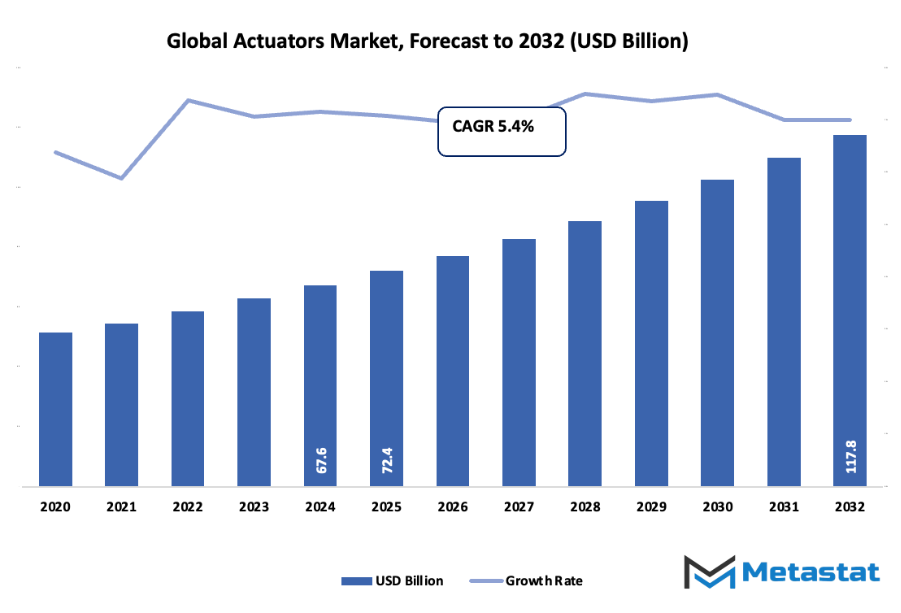
The shift from mechanical to electric devices enabled increased efficiency, velocity, and integration. Automation gained ground throughout factories and production lines, and Actuators became vital in materials handling, assembly, and materials transportation. With the evolution of electronics, sensors and controllers were incorporated, thus creating smarter, self-controlled systems capable of reacting to feedback in real time. This restructuring provided the foundation for the modern global actuators market, thus positioning it as a cornerstone for industrial development. Digitalization and robotics during the late twentieth century and the early part of the twenty-first century introduced an entirely new era for innovation. Actuators were no longer mere motion enablers but rather intelligent components that promoted system-level performance.
The automotive revolution towards hybrid and electric vehicles fueled the need for energy-efficient and space-saving Actuators that could do everything from engine valves to brakes. Similarly, the aerospace sector began to consider light-weight material and accuracy-guided actuation to enhance fuel effectiveness and security in flight. The global market for Actuators will continue to evolve as businesses embrace automation and interconnection technologies. Smart manufacturing, the Internet of Things, and energy-saving designs will most probably transform the manner in which Actuators operate and interact with systems. Environmental and safety regulations will also be shaping future development, compelling producers to produce cleaner and greener options.
From its early days as a simple mechanical assistant to its current position as a vanguard of the pursuit of technological accuracy, the worldwide Actuators market will remain at the forefront of industrial innovation, always adapting to keep up with the dynamic needs of innovation and management.
Market Segments
The global actuators market is mainly classified based on Type, Motion, Application, Vertical.
By Type is further segmented into:
- Hydraulic: Hydraulic Actuators in the global actuators market utilize pressurized fluid to create motion and develop high force output. Hydraulic Actuators will continue to be an integral part of heavy-duty industrial applications where precision and force are required. Newer models will focus on improving energy efficiency, compactness, and flexibility to newer automation systems.
- Pneumatic: Pneumatic Actuators in the market operate on compressed air and are valued for reliability, low cost, and simplicity. The Actuators will find greater application among industries needing fast motion combined with low maintenance needs. Advanced developments will be aimed at air efficiency, sustainable environment, and improved compatibility with intelligent factory devices.
- Electric: Electric Actuators in the market convert electrical energy into mechanical movement and are becoming more sought after since they are controlled and accurate. Energy efficiency, digitalization, and remote monitoring will be enhanced by future innovations. Electric systems will become increasingly popular as industries adopt greener, smarter automation solutions.
- Others: There exist other types of Actuators within the world Actuators market, including thermal, magnetic, and piezoelectric. They will expand to specialized uses with precise movement and high responsiveness. They will rely on innovation within material science, micro-engineering, and incorporation with artificial intelligence for most effective industrial processes.
By Motion the market is divided into:
- Linear: Linear Actuators within the global actuators market convert energy into linear movement, and therefore they play an important role in precise positioning. The design of linear actuators will be optimized based on speed, load, and integration of digital control in the future. They will be used more in robotics, manufacturing, and transport with smarter automation and data-orientedness.
- Rotary: Rotary Actuators in the market provide rotational motion for various industrial processes. The Actuators will grow further with improvements in torque output, lifespan, and smart feedback systems. Emerging trends will target compact designs, preventive maintenance, and seamless integration into automated production systems.
By Application the market is further divided into:
- Industrial Automation: Industrial automation applications create tremendous demand in the world's Actuators market with manufacturing sectors adopting smart machinery. Future automation systems will depend on efficient Actuators to deliver exact control and faster production cycles. Innovation will center on forecasted behavior, minimal energy consumption, and integration with digital manufacturing networks.
- Robotics: Robotics applications within the global actuators market require Actuators for mobility, accuracy, and responsiveness. Future robotics will rely on energy-efficient, light-weight, and responsive Actuators in order to perform complex tasks. Industrial development of service robots, autonomous devices, and manufacturing robots will further increase the penetration of actuator technology into automation.
- Vehicles and Equipment: Automotive and equipment use in the market use Actuators for control of motion, steering systems, and braking. The future vehicles will need stronger and smarter Actuators to support electrification and autonomous technologies. There will be a focus on enhancing reliability, efficiency, and safety in various mobility systems.
- Other: Other applications within the market include aerospace, defense, and naval activities. These sectors will increasingly rely on advanced Actuators that are capable of withstanding harsh temperatures and conditions. New innovations will further refine accuracy, reduce maintenance needs, and include monitoring capabilities for greater operational safety and performance.
By Vertical the global actuators market is divided as:
- Food & Beverages: The food and beverages sector in the global actuators market depends on Actuators for automation in packaging, processing, and handling. Future systems will require hygienic, corrosion-resistant, and energy-efficient Actuators. Increased focus on safety and sustainability will encourage the use of advanced motion solutions across this sector.
- Oil & Gas: The oil and gas industry in the market utilizes Actuators for valve control and flow regulation. Future advancements will support operations in harsh environments and ensure safer processes. Digital monitoring, predictive analytics, and remote control will become key elements driving efficiency in this segment.
- Metals: The metals industry in the market benefits from Actuators that handle material movement and shaping processes. Future Actuators will enhance precision and durability under extreme heat and pressure conditions. Increased automation in metal fabrication and processing will promote the demand for high-performance actuator systems.
- Mining & Machinery: Mining and machinery applications in the market use Actuators for equipment motion and operational safety. Future growth will come from smart Actuators designed for rugged environments and remote monitoring. These innovations will improve productivity and reduce maintenance costs in large-scale mining operations.
- Power Generation: The power generation sector in the market relies on Actuators for controlling turbines, valves, and energy systems. Future designs will emphasize efficiency, reliability, and integration with digital energy management tools. The shift toward renewable energy will further expand the demand for intelligent actuation technologies.
- Chemicals: Chemical industry operations in the market need Actuators for precise control of flow, temperature, and pressure. Future technologies will focus on corrosion resistance, automation compatibility, and environmental compliance. Enhanced actuator performance will support safer and more efficient chemical production processes worldwide.
- Paper & Plastics: The paper and plastics industry in the market depends on Actuators for process control in manufacturing lines. Future advancements will include faster response systems, energy efficiency, and smart feedback mechanisms. Growth in sustainable materials and recycling will increase demand for adaptive actuation technologies.
- Pharmaceutical & Healthcare: The pharmaceutical and healthcare sectors in the market require high-precision Actuators for laboratory, manufacturing, and medical device applications. Future systems will highlight reliability, hygiene, and compliance with strict regulations. Automation in healthcare will boost demand for accurate and energy-efficient motion control solutions.
- Automotive: The automotive sector in the market utilizes Actuators for powertrain, braking, and comfort systems. Future vehicles will adopt smarter Actuators with electric and autonomous capabilities. Focus will remain on energy efficiency, compact design, and integration with electronic control units to enhance vehicle performance.
- Other: Other verticals in the global actuators market include aerospace, defense, and marine industries. These sectors will continue to need robust Actuators that deliver precision and reliability in demanding environments. Future innovation will aim for lighter materials, enhanced power density, and better integration with automated control systems.
|
Forecast Period |
2025-2032 |
|
Market Size in 2025 |
$72.4 Billion |
|
Market Size by 2032 |
$117.8 Billion |
|
Growth Rate from 2025 to 2032 |
7.2% |
|
Base Year |
2024 |
|
Regions Covered |
North America, Europe, Asia-Pacific, South America, Middle East & Africa |
By Region:
- Based on geography, the global actuators market is divided into North America, Europe, Asia-Pacific, South America, and the Middle East & Africa.
- North America is further divided into the U.S., Canada, and Mexico, whereas Europe consists of the UK, Germany, France, Italy, and the Rest of Europe.
- Asia-Pacific is segmented into India, China, Japan, South Korea, and the Rest of Asia-Pacific.
- The South America region includes Brazil, Argentina, and the Rest of South America, while the Middle East & Africa is categorized into GCC Countries, Egypt, South Africa, and the Rest of the Middle East & Africa.
Growth Drivers
- Increasing demand for automation in industrial processes: Automation will play a major role in shaping the future of the global actuators market. Manufacturing units are focusing on reducing manual effort and increasing productivity through smart machinery. Actuators are essential components in automated systems, helping control mechanical movement with accuracy. This demand will create strong growth potential across various industries.
- Growth in the automotive sector, particularly in electric vehicles: The market will benefit from the expanding automotive sector, especially the rapid growth of electric vehicles. Actuators are vital in controlling systems such as braking, steering, and powertrain functions. As electric vehicles continue to gain popularity, manufacturers will rely more on advanced Actuators for energy efficiency and vehicle performance improvement.
Challenges and Opportunities
- High initial investment costs: One major challenge for the global actuators market will be the high cost of installation and system integration. Many industries find it difficult to justify initial spending on advanced Actuators, especially small-scale enterprises. Although these costs can be recovered through efficiency gains, the upfront financial barrier may restrict rapid market expansion.
- Technical limitations in precision and reliability: The market will also encounter issues related to precision and reliability. Despite technological progress, achieving high accuracy under varied conditions remains difficult. Actuators used in sensitive applications, such as aerospace or robotics, must maintain consistent performance, making technical improvement a key focus for future development.
Opportunities
- Integration of smart technologies for IoT-enabled Actuators: Integration of smart technologies will drive the next phase of growth for the global actuators market. IoT-enabled Actuators will allow real-time monitoring, predictive maintenance, and remote control of machinery. These advancements will help industries improve productivity, minimize downtime, and achieve higher operational efficiency through intelligent automation systems.
Competitive Landscape & Strategic Insights
The global actuators market is experiencing strong growth as technology continues to shape industrial processes across multiple sectors. The industry is a mix of both international industry leaders and emerging regional competitors, each contributing to advancements in automation, energy efficiency, and performance reliability. Companies such as Siemens AG, ABB Group, Honeywell International Inc., Emerson Electric Co., Schneider Electric, Rockwell Automation, Inc., Parker Hannifin Corporation, SMC Corporation, Festo AG & Co. KG, SKF Group, Johnson Controls International plc, Eaton Corporation, Bosch Rexroth AG, Rotork plc, Moog Inc., Danfoss, Woodward, Inc., Flowserve Corporation, Nabtesco Corporation, Curtiss-Wright Corporation, Altra Industrial Motion, ZF Friedrichshafen AG, and Denso Corporation play a significant role in driving the market forward through constant innovation and technological integration.
The future of the market will be defined by the growing demand for automation and intelligent control systems. Industries such as manufacturing, automotive, aerospace, and energy are increasingly adopting advanced Actuators to improve precision, speed, and efficiency. With smart factories becoming more common, Actuators equipped with sensors and digital connectivity will enable real-time data monitoring and predictive maintenance, reducing downtime and improving productivity. This digital shift will not only optimize performance but also support sustainability by lowering energy consumption and operational costs.
Continuous research and development by leading companies will push the boundaries of performance and design. Compact and lightweight Actuators will become more prevalent, offering better power output with minimal energy usage. The focus will also expand to include environmentally friendly materials and production processes, aligning with global efforts to reduce carbon emissions. As a result, the market will see an increasing shift toward electric Actuators that replace older hydraulic and pneumatic systems, offering cleaner and more efficient alternatives.
Emerging regional competitors will also gain traction as localized production and customized solutions become more valuable. These competitors will cater to specific market needs, often providing cost-effective alternatives without compromising quality. Their presence will create a more balanced competitive environment, encouraging both innovation and affordability. Partnerships, mergers, and collaborations between established corporations and newer entrants will continue to shape the market landscape, allowing the exchange of expertise, technology, and resources.
Market size is forecast to rise from USD 72.4 Billion in 2025 to over USD 117.8 Billion by 2032. Actuators will maintain dominance but face growing competition from emerging formats.
The global actuators market will continue to expand as industries prioritize automation and digital transformation. Ongoing investments in smart technology and energy-efficient solutions will ensure that Actuators remain a vital component in industrial systems worldwide. Through innovation, collaboration, and sustainability-focused development, the future of the market will be one of steady progress and technological advancement.
Report Coverage
This research report categorizes the global actuators market based on various segments and regions, forecasts revenue growth, and analyzes trends in each submarket. The report analyses the key growth drivers, opportunities, and challenges influencing the global actuators market. Recent market developments and competitive strategies such as expansion, type launch, development, partnership, merger, and acquisition have been included to draw the competitive landscape in the market. The report strategically identifies and profiles the key market players and analyses their core competencies in each sub-segment of the global actuators market.
Actuators Market Key Segments:
By Type
- Hydraulic
- Pneumatic
- Electric
- Others
By Motion
- Linear
- Rotary
By Application
- Industrial Automation
- Robotics
- Vehicles and Equipment
- Other
By Vertical
- Food & Beverages
- Oil & Gas
- Metals
- Mining & Machinery
- Power Generation
- Chemicals
- Paper & Plastics
- Pharmaceutical & Healthcare
- Automotive
- Other
Key Global Actuators Industry Players
- Siemens AG
- ABB Group
- Honeywell International Inc.
- Emerson Electric Co.
- Schneider Electric
- Rockwell Automation, Inc.
- Parker Hannifin Corporation
- SMC Corporation
- Festo AG & Co. KG
- SKF Group
- Johnson Controls International plc
- Eaton Corporation
- Bosch Rexroth AG
- Rotork plc
- Moog Inc.
- Danfoss
- Woodward, Inc.
- Flowserve Corporation
- Nabtesco Corporation
- Curtiss-Wright Corporation
- Altra Industrial Motion
- Moog Inc.
- ZF Friedrichshafen AG
- Denso Corporation
WHAT REPORT PROVIDES
- Full in-depth analysis of the parent Industry
- Important changes in market and its dynamics
- Segmentation details of the market
- Former, on-going, and projected market analysis in terms of volume and value
- Assessment of niche industry developments
- Market share analysis
- Key strategies of major players
- Emerging segments and regional growth potential



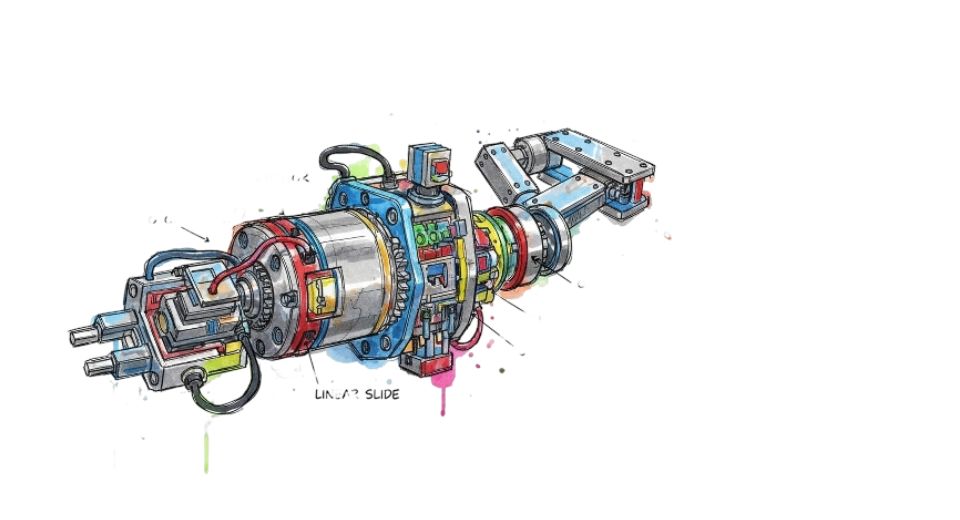
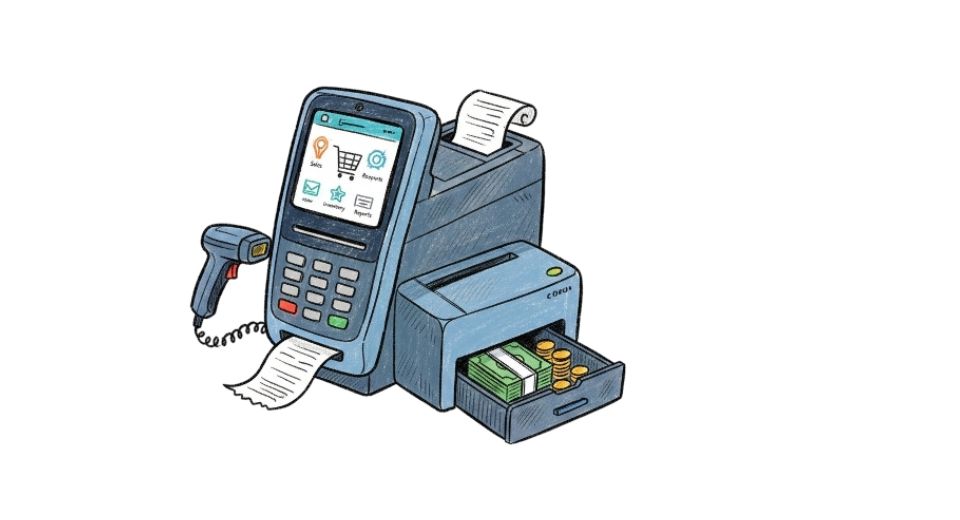
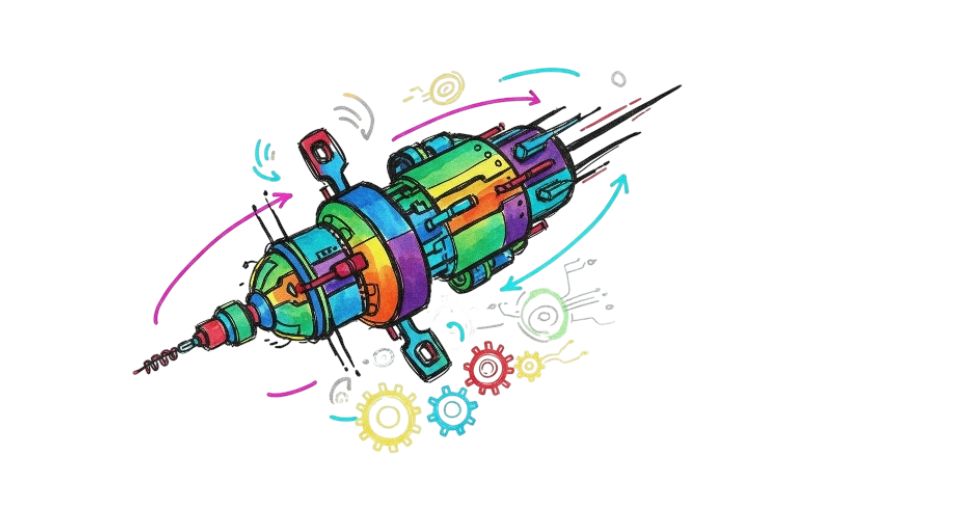
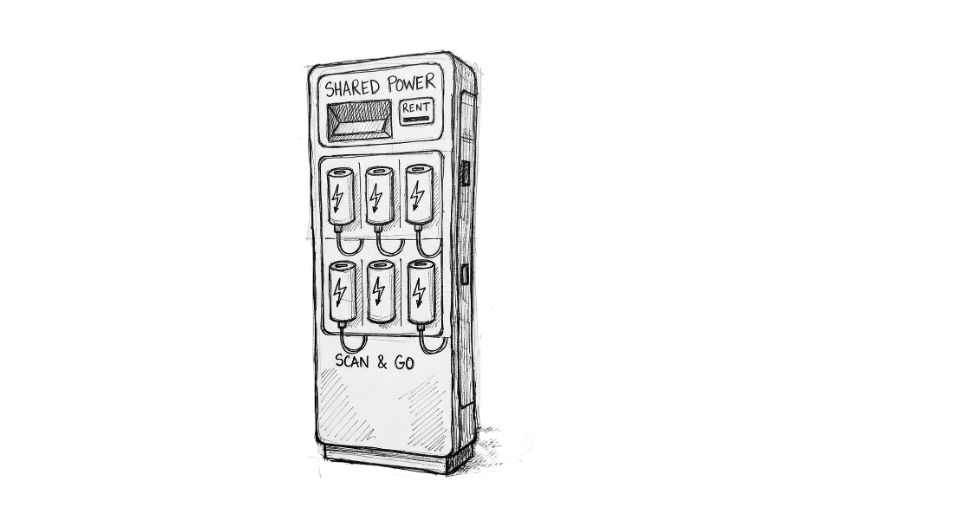

 US: +1 3023308252
US: +1 3023308252






